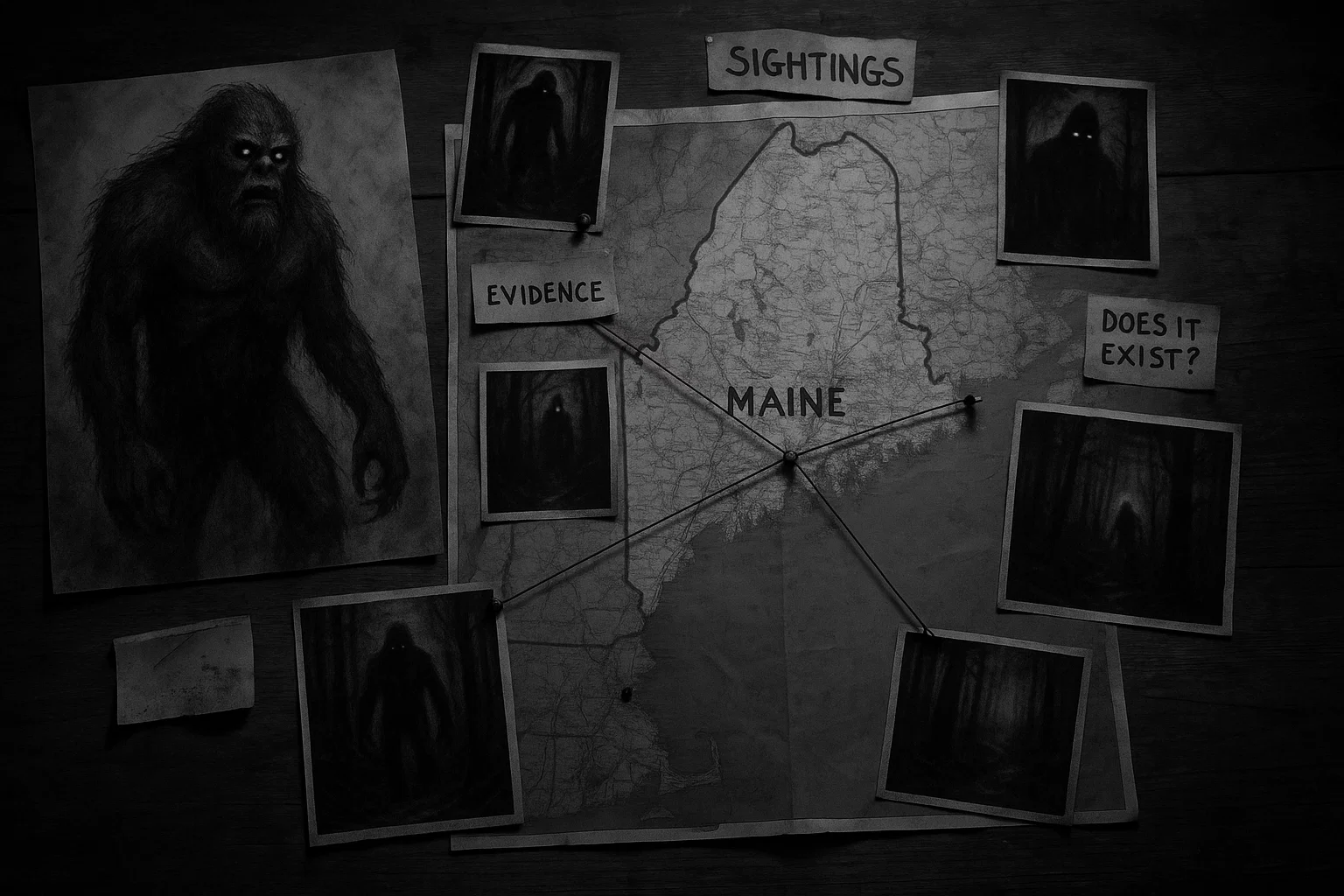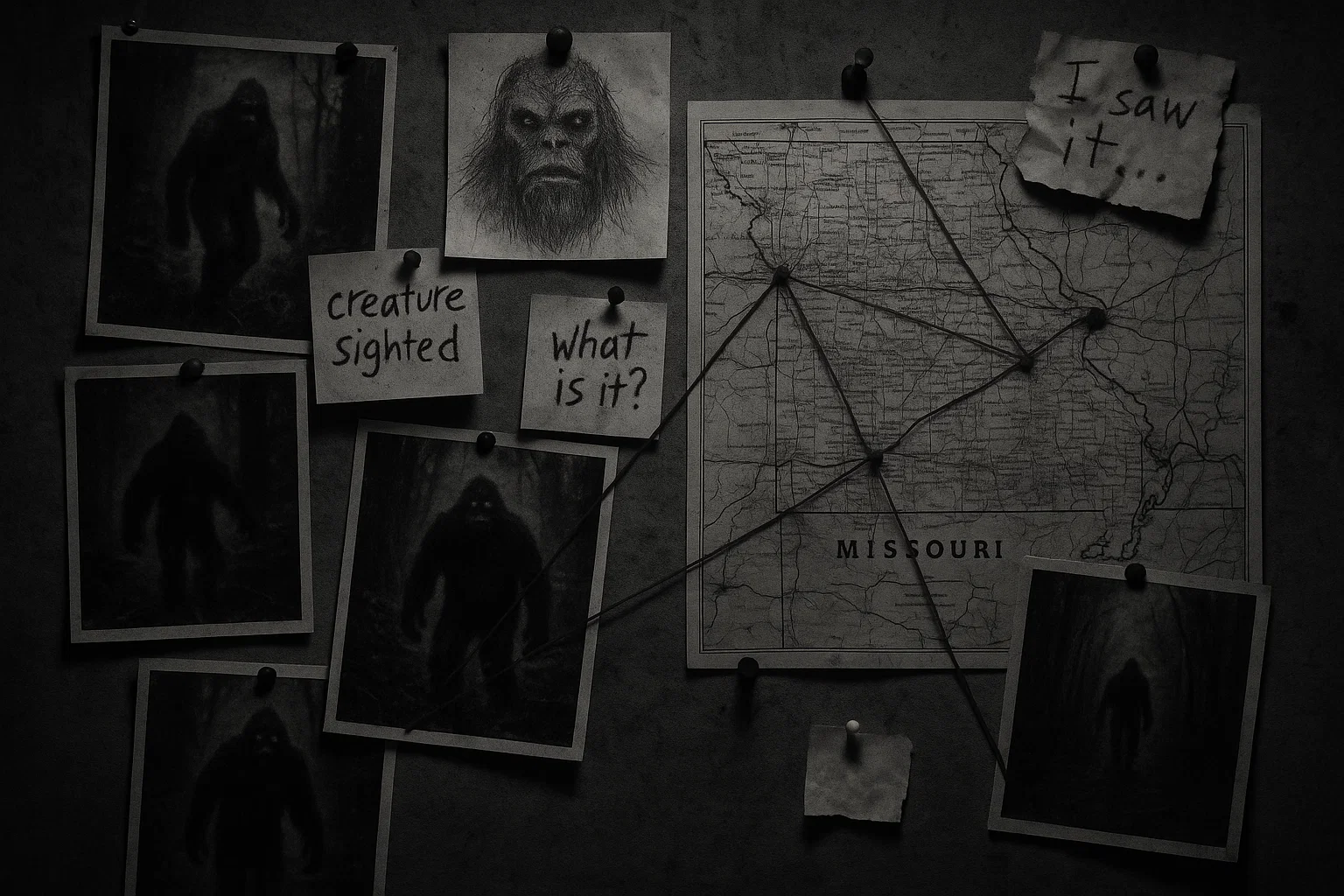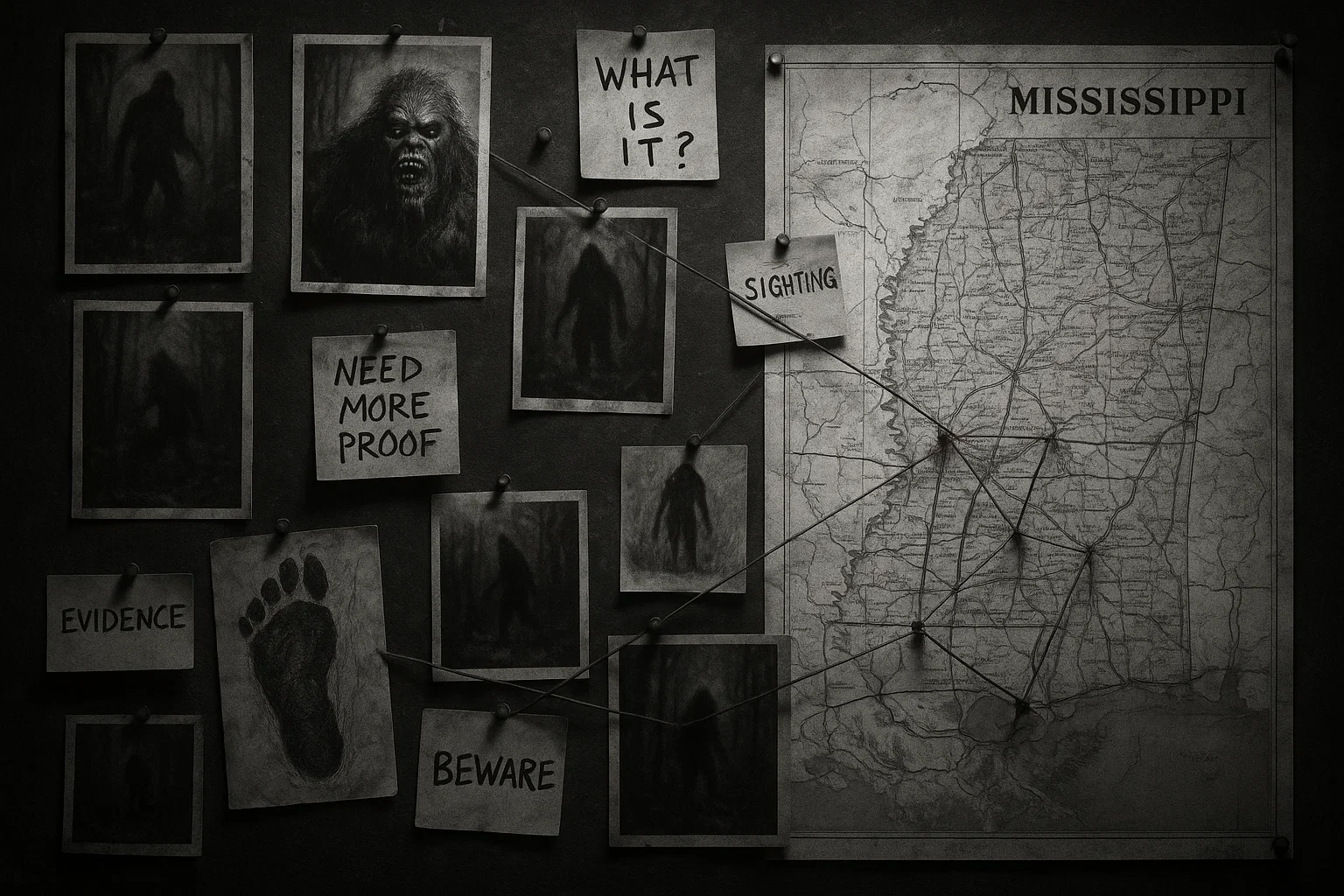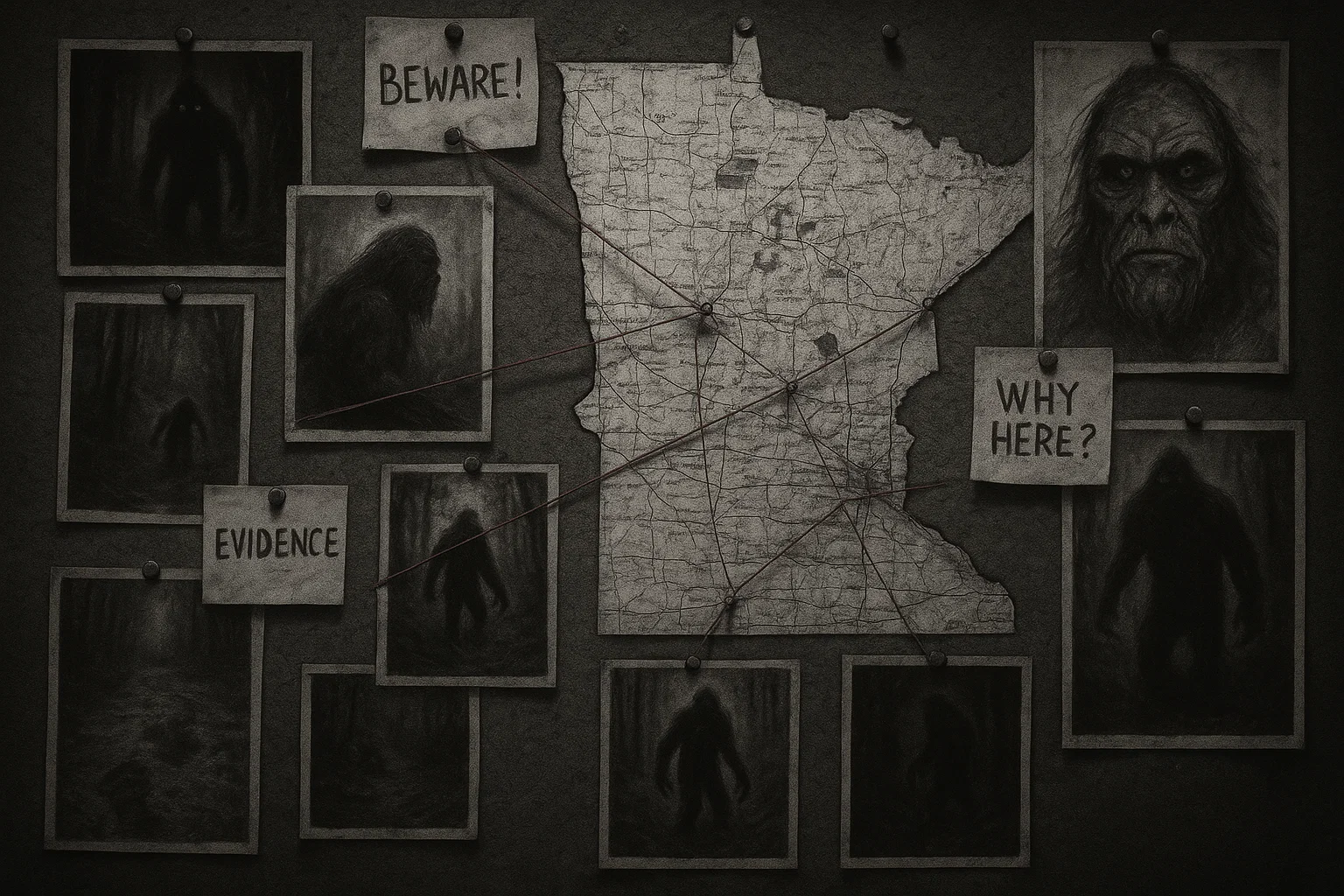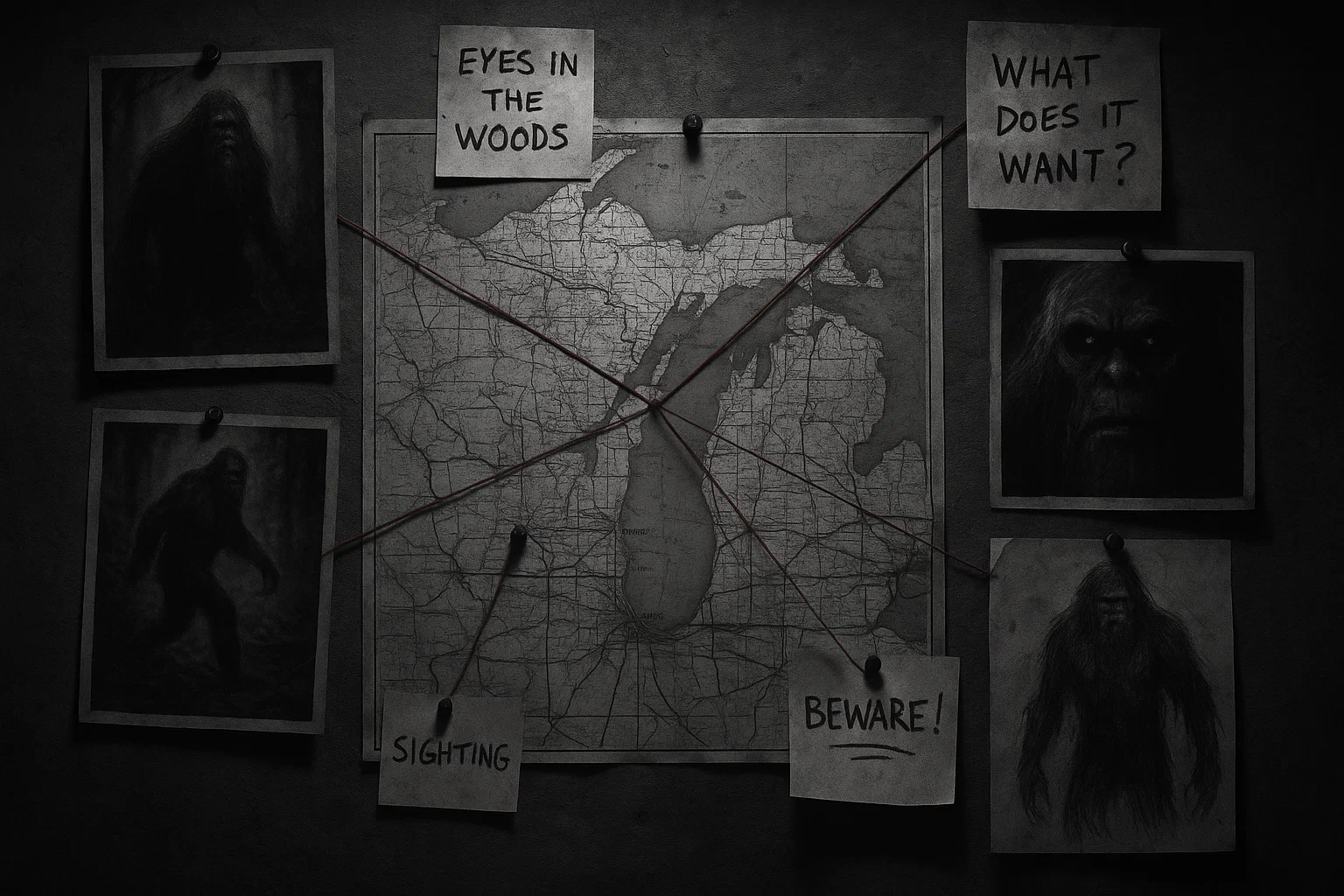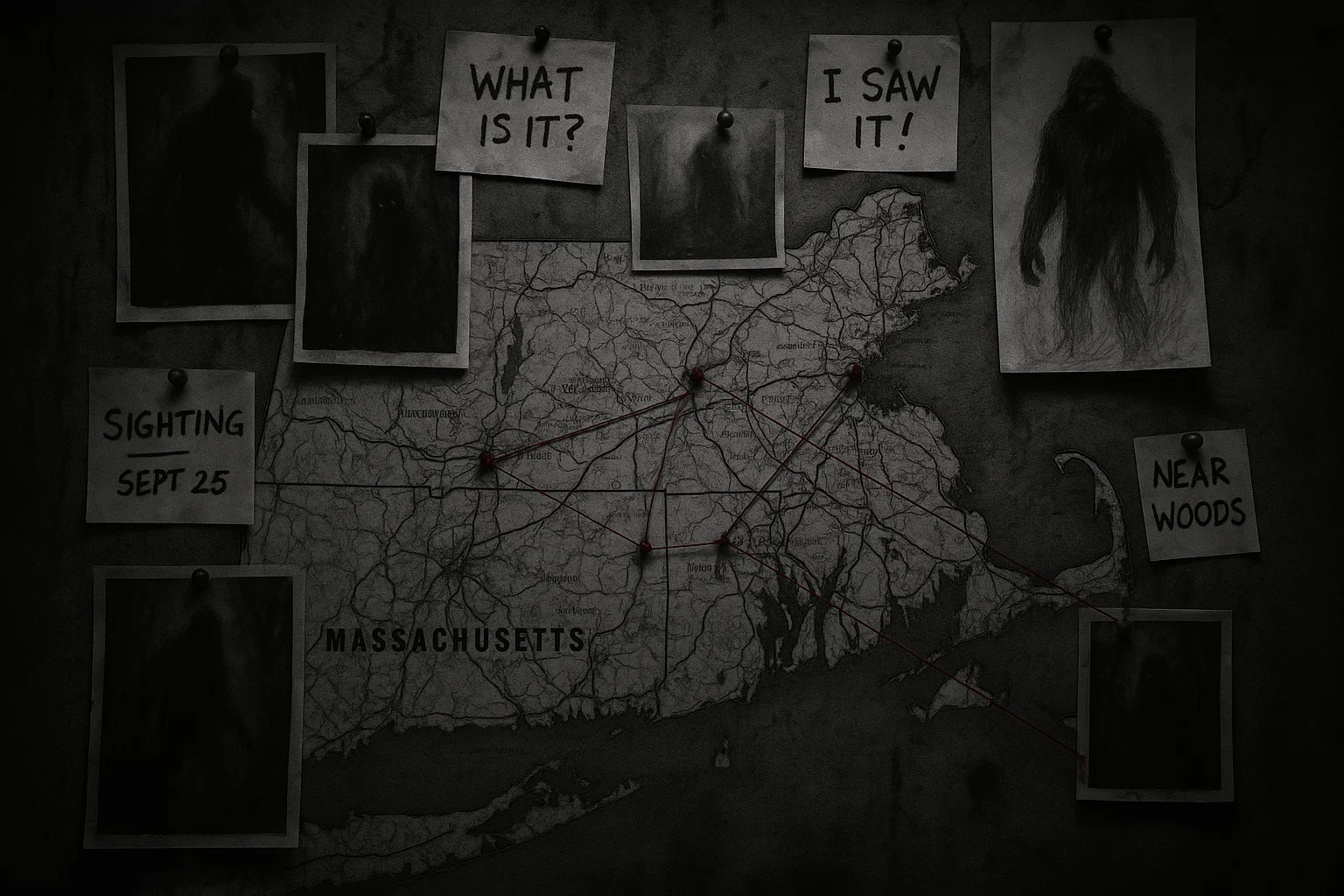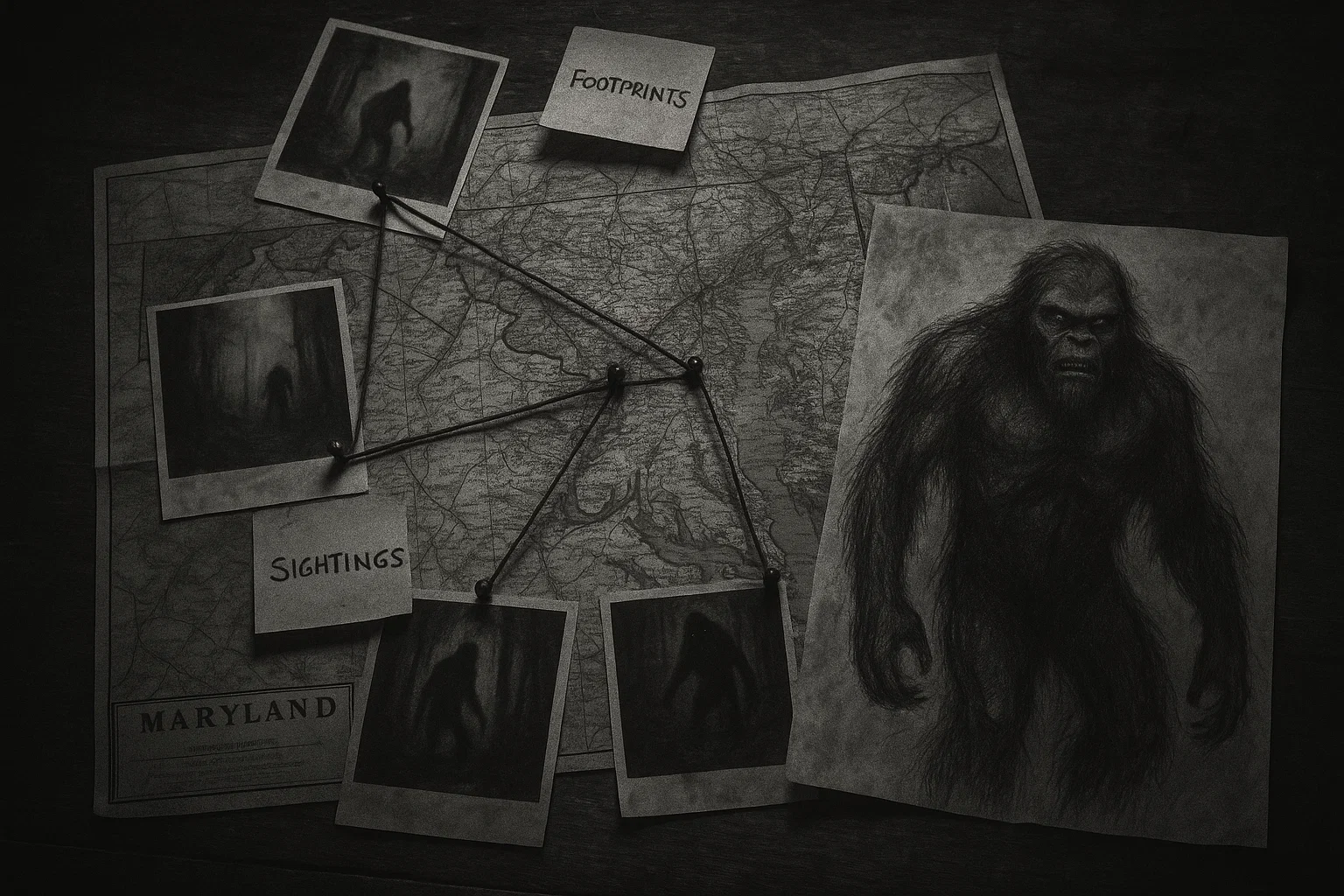Maine, with its sprawling wilderness and dense forests, is a prime setting for tales of the elusive Bigfoot, a creature steeped in mystery and folklore. Maine Bigfoot sightings have captivated locals and researchers for over a century, with reports describing a towering, hairy, bipedal figure lurking in the state’s rugged landscapes.
This article delves into the rich history of Bigfoot sightings in Maine, exploring documented encounters, investigative efforts, notable case studies, and comparisons with other cryptid phenomena, offering a thorough examination of this enduring enigma.
Table of Contents
Maine Bigfoot Sightings
Maine’s vast, forested terrain, covering over 90% of its land, provides an ideal habitat for a creature like Sasquatch, often described as a large, ape-like being with a pungent odor. Bigfoot sightings in Maine have been reported across nine of the state’s 16 counties, with York and Oxford counties being particular hotspots.
These encounters range from fleeting glimpses of a shadowy figure to discoveries of massive footprints and eerie vocalizations, fueling local legends and cryptozoological intrigue.
The Bigfoot Field Researchers Organization (BFRO) has documented at least 20 credible Maine Bigfoot sightings since 1970, though historical accounts stretch back to the 19th century. These reports often involve credible witnesses, such as hunters, fishermen, and park rangers, who describe encounters with a creature standing 6 to 8 feet tall, covered in dark or reddish-brown hair.
Below is a comprehensive table of all documented Bigfoot sightings in Maine, compiled from BFRO reports, Michelle Souliere’s Bigfoot in Maine, and other local sources, organized chronologically from the earliest known sighting to the most recent in 2025.
| Date | Witness | Location | Description |
|---|---|---|---|
| 1895 | Anonymous | South Gardner, Kennebec County | Two women and three boys picking blueberries saw a hairy, upright creature resembling an “immense African monkey” emitting unearthly shrieks. The group fled in terror. |
| Early 1900s | Anonymous | Near Millinocket, Penobscot County | A logger reported a large, hairy, man-like creature darting across a road, forcing him to brake suddenly to avoid a collision. |
| November 1970 | Anonymous | Piscataquis County | A brief BFRO report noted a sighting of a large, bipedal figure; specific details remain unavailable due to limited documentation. |
| Summer 1973 | Jean Williams | Interstate 95, north of Bangor, Penobscot County | While driving, Williams observed a dark brown or black hairy creature striding swiftly across the southbound lanes, standing erect with long, swinging arms, distinctly unlike a bear. |
| June 1974 | Anonymous | Kennebunk, York County | A camper heard loud, unexplained screams echoing through a forested area at night, described as guttural and unlike any known wildlife. |
| August 1977 | Anonymous | Berwick, York County | During a game of hide and seek, witnesses reported seeing a large, hairy creature moving swiftly through the woods, partially obscured by trees. |
| 1985 | Anonymous | York County | A witness reported a brief sighting of a bipedal, hairy figure near a rural trail, with no further details provided. |
| May 1990 | Anonymous | Mattawamkeag River, near Island Falls, Aroostook County | A father and son fishing saw a large, hairy figure standing on the riverbank, watching them before retreating into the forest. |
| November 1997 | Anonymous | Northport, Waldo County | A car accident was attributed to a large, hairy creature crossing the road, though the driver could not confirm details due to the crash. |
| July 1998 | Anonymous | Wooded road, Oxford County | A driver reported a tall, bipedal creature crossing a remote road, moving with a fluid gait and disappearing into dense underbrush. |
| July 2001 | Anonymous | Camping location, Oxford County | A camper heard deep growls and vocalizations over several nights, accompanied by the sound of heavy footsteps circling the campsite. |
| February 2007 | Anonymous | Freedom, Waldo County | A school bus driver saw an 8-foot-tall, light brown to gray hairy creature crossing a snowbank, leaving 16-inch footprints spaced 7 feet apart in the snow. |
| 2011 | Jeff Robertson, Seth Robertson | Livermore Falls, Androscoggin County | Over several years, the Robertsons found a 12-foot-long footprint with toe imprints, heard vocalizations, tree shakes, and knocks, and saw a 6-foot-tall black-haired figure near their property. |
| 2011 | Anonymous | Augusta Road, Kennebec/Lincoln border | A walker observed a large, hairy creature moving along the roadside, partially hidden by trees, before it vanished into the forest. |
| January 2016 | Anonymous | Freedom, Waldo County | A witness saw a 7-foot-tall, dark-haired creature cross a road and enter the woods, accompanied by the sound of breaking branches. |
| February 2016 | Anonymous | Near Hollis, York County | A hiker discovered a trackway in the snow, with large, bipedal footprints suggesting a heavy creature moving through the area. |
| July 2016 | Anonymous | Near Wilson Mills, Oxford County | A family searching for moose antlers found a large, human-like footprint in soft soil, with no claw marks, near a remote trail. |
| February 2017 | Anonymous | Vaughn Woods State Park, east of Dover, York County | A hiker found a trackway in the snow, with 15-inch footprints spaced widely, indicating a large bipedal creature. |
| April 2017 | Anonymous | Saco River basin, York County | Multiple witnesses reported a large, hairy creature near a tree structure, possibly a territorial marker, in a forested area. |
| September 2020 | Anonymous | Powerlines south of Bryant Pond, Oxford County | Multiple witnesses observed a massive, bipedal creature walking within 200 yards in daylight, retreating into the woods upon noticing humans. |
| November 2020 | Anonymous | Hancock County | A brief sighting was reported, with limited details due to the witness’s request for anonymity. |
| August 2022 | Anonymous | Lake 30 miles NW of Lewiston, Oxford County | A fisherman heard loud knocks and observed trees pushed over, consistent with Bigfoot territorial behavior, near a remote lake. |
| December 2023 | Anonymous | Aroostook County | A hunter reported a brief sighting of a tall, hairy figure moving through dense woods, with no further details provided. |
| February 2025 | Anonymous | Near Kenyon Hill Preserve, York County | After a heavy snowstorm, a hiker found large footprints (7–8 feet apart) in the snow, followed for 150 feet before they faded into dense brush. |
You May Also Like: Complete Guide to Iowa Bigfoot Sightings (1965–2025)
Investigation Efforts in Maine
The investigation of Bigfoot sightings in Maine extends beyond the BFRO, involving local researchers, organizations, and media efforts to uncover the truth behind these enigmatic encounters. These investigations aim to verify witness accounts, collect physical evidence, and explore the cultural and environmental factors that make Maine a hotspot for Sasquatch activity.
Michelle Souliere, a Portland-based author and owner of the Green Hand Bookshop, has been a pivotal figure in Maine’s Bigfoot research since 2005. Her book, Bigfoot in Maine, compiles over 20 firsthand accounts, many from credible witnesses like hunters, loggers, and park rangers.
Souliere’s approach emphasizes empathetic interviews, allowing witnesses to share their experiences without fear of judgment. Her work highlights the consistency of reports, such as descriptions of a pungent odor and large, clawless footprints, and she has organized events, like a 2021 Zoom talk with the Maine Historical Society, to discuss these findings.
The Maine Bigfoot Foundation, Inc. is another key player, focusing on community outreach and encouraging witnesses to report sightings. Unlike the BFRO, which prioritizes scientific rigor, the Foundation fosters a supportive environment for sharing stories, hosting local meetups and maintaining a database of unverified reports. Their efforts have uncovered additional sightings not documented by the BFRO, particularly in rural areas like Aroostook County.
Loren Coleman, a renowned cryptozoologist, operates the International Cryptozoology Museum in Portland, which serves as a hub for Bigfoot research in Maine. The museum displays casts of alleged Bigfoot footprints, hair samples, and witness sketches, including those from Maine sightings.
Coleman’s work emphasizes interdisciplinary approaches, combining folklore, anthropology, and zoology to analyze Maine Bigfoot sightings. His museum has hosted conferences, such as the 2019 Cryptozoology Conference, where researchers discussed Maine’s cryptid landscape.
Local media has also contributed significantly. The 2016 Finding Bigfoot episode, “Bigfoot’s Maine Event,” featured interviews with witnesses from York and Oxford counties and recorded possible Bigfoot howls near the Saco River.
The show’s team, including BFRO founder Matt Moneymaker, conducted nighttime investigations, using thermal imaging and audio recordings to detect activity. Additionally, News Center Maine aired a 2021 segment interviewing Souliere, highlighting the Livermore Falls sighting and exploring Maine’s wilderness as a potential Bigfoot habitat.
Independent researchers, such as Bill Brock, a Maine-based cryptozoologist, have conducted field investigations in areas like Vaughn Woods State Park. Brock’s team uses trail cameras, audio recorders, and drone surveys to search for evidence, though results remain inconclusive. Community groups, like the Maine Mystery Society, organize expeditions in areas with frequent sightings, such as the Allagash Wilderness Waterway, encouraging citizen scientists to contribute to the research.
These efforts reveal a multifaceted approach to investigating Bigfoot sightings in Maine. While the BFRO focuses on credibility and classification (e.g., Class A for high-credibility sightings), local researchers like Souliere and Coleman emphasize cultural context and witness experiences. The lack of definitive physical evidence—such as DNA or a specimen—remains a challenge, but the consistency of reports and the dedication of investigators keep the mystery alive.
Detailed Case Studies
Livermore Falls Sighting (2011)
The Livermore Falls sighting of 2011 stands out as one of the most detailed and compelling Maine Bigfoot sightings, documented through extensive witness accounts by Jeff Robertson and his son Seth Robertson. This case, spanning several years, offers a wealth of evidence, including footprints, vocalizations, and visual encounters, making it a cornerstone of Maine’s cryptozoological history.
The Robertsons’ encounters began while foraging for fiddleheads near a brook in Livermore Falls, Androscoggin County. They discovered a 12-foot-long footprint with distinct toe imprints but no claw marks, a hallmark of Bigfoot tracks. Jeff described the print as “unlike anything I’d ever seen, too big for a bear and definitely human-like in shape.” Over the following months, the family experienced:
- Vocalizations: Deep, guttural growls and howls, described by Seth as “like a man shouting but lower and more resonant,” heard at night near their property.
- Tree Shakes and Knocks: Violent shaking of trees, accompanied by rhythmic knocking sounds, often occurring in patterns of three or four. Jeff noted, “It felt like something was trying to communicate or scare us off.”
- Visual Sightings: On multiple occasions, the Robertsons saw a 6-foot-tall, black-haired, bipedal figure. One notable sighting occurred while driving across the Androscoggin River on Route 219 in Leeds, where Jeff observed the creature standing near a tree line, its eyes reflecting in the headlights.
The Robertsons maintained a detailed log, recording hundreds of tree knocks, vocalizations, and sightings over several years. They reported feeling a mix of fear and curiosity, with Jeff stating, “I’m an outdoorsman, I know Maine’s wildlife, and this was no bear or moose.” Michelle Souliere interviewed the family extensively, noting their consistency and sincerity.
She also illustrated the footprint, which showed five toes and a broad heel, further distinguishing it from known animals. The longevity of the encounters and the variety of evidence—physical, auditory, and visual—make this case a focal point for Bigfoot sightings in Maine.
You May Also Like: Complete Guide to Kansas Bigfoot Sightings (1869–2025)
Freedom Sighting (2007)
The Freedom sighting of February 2007, reported by an anonymous school bus driver in Waldo County, is another significant case due to its detailed physical evidence and credible witness. This encounter, classified as a Class A sighting by the BFRO, provides a vivid snapshot of a Maine Bigfoot sighting in a rural setting.
The witness, a seasoned driver familiar with Maine’s wildlife, was navigating a snow-covered road in Freedom when they spotted an 8-foot-tall, light brown to gray hairy creature crossing a snowbank. The creature moved with a deliberate, upright gait, covering the road in a few strides before entering the woods.
The driver stopped to investigate and found 16-inch footprints spaced approximately 7 feet apart, embedded deeply in the snow, suggesting a heavy creature. The witness stated, “I’ve seen bears and moose, but this was different—tall, broad-shouldered, and walking like a man.”
The BFRO investigated the site, confirming the footprint measurements and noting the absence of claw marks, which ruled out bears. The witness’s familiarity with the outdoors and the clear conditions of the snowy morning added credibility to the report. The sighting’s proximity to other Waldo County reports, such as the 2016 Freedom encounter, suggests a possible pattern of Bigfoot activity in the area.
The driver’s reluctance to share their name, citing potential ridicule, underscores the social challenges faced by witnesses of Bigfoot sightings in Maine.
Bigfoot Sightings vs Other Cryptid Sightings in Maine
Maine’s folklore is rich with cryptids beyond Bigfoot, each contributing to the state’s reputation as a haven for mysterious creatures. These beings, documented through local accounts and the International Cryptozoology Museum, range from terrestrial to aquatic, often sharing the same remote landscapes as Maine Bigfoot sightings:
- Maine Mousie: A small, rodent-like creature with a long tail and large, reflective eyes, reported in southern Maine, particularly York County. Sightings, such as one in Kittery in 1995, describe a quick, nocturnal creature scurrying through underbrush, distinct from Bigfoot’s massive form.
- Specter Moose: A ghostly, oversized moose, often glowing white, reported near Mount Katahdin and Baxter State Park. A 1999 sighting described a 12-foot-tall moose with antlers spanning 10 feet, vanishing into fog. Its ethereal nature contrasts with Bigfoot’s physicality, but distant sightings could be mistaken for a tall, upright figure.
- Billdad: A beaver-like creature with kangaroo-like legs and an eagle’s beak, said to inhabit lakes in northwestern Maine, near Rangeley. A 2005 report noted a creature leaping into water, leaving no tracks, unlike Bigfoot’s large footprints.
- Ding-Ball: A small, furry, tree-dwelling creature known for whistling sounds, reported in central Maine, particularly Penobscot County. A 2010 sighting described a creature swinging between trees, too small to be confused with Bigfoot.
- Sea Serpents (Cassie and Wessie): Cassie, a serpentine creature in Casco Bay, was reported in 1958 and 2002, described as 60 feet long with a horse-like head. Wessie, a 10-foot snake-like creature, was spotted in the Presumpscot River in 2016, with witnesses noting its sinuous movement. These aquatic cryptids differ significantly from Bigfoot’s terrestrial nature.
- Maine Monster: A 30-foot-long, reptilian sea creature reported off Matinicus Island in 1987, with long jaws and multiple fins, distinct from Bigfoot’s bipedal form.
- Palmyra Wolf Pack: In the mid-2000s, a Palmyra family reported large, wolf-like creatures with upright postures in Somerset County. A 2006 encounter described a 7-foot-tall creature with canine features, potentially mistaken for Bigfoot due to its size and bipedal stance.
You May Also Like: Complete Guide to Kentucky Bigfoot Sightings (1960–2025)
Potential Connections
While most cryptids have distinct traits, misidentification is possible in Maine’s dense forests, where visibility is low. For example, a fleeting glimpse of the Specter Moose or Palmyra Wolf Pack could be interpreted as a Bigfoot sighting, especially at dusk or dawn.
The Palmyra Wolf Pack’s upright posture and large size share similarities with Bigfoot descriptions, suggesting possible overlap in witness perceptions. However, Bigfoot’s consistent traits—large, clawless footprints, deep vocalizations, and a pungent odor—set it apart from other cryptids.
Maine’s paranormal phenomena also intersect with Bigfoot sightings in Maine. UFO sightings, particularly near Mount Katahdin, have occasionally coincided with Bigfoot reports, as noted in local accounts from the 1980s. Witnesses describe strange lights or orbs alongside Bigfoot encounters, raising questions about a broader supernatural connection. Haunted locations, like the Charles Inn in Bangor, where ghostly voices are reported, add to Maine’s eerie atmosphere, potentially influencing how Bigfoot sightings are perceived.
Unexplained Events
Maine’s history includes other unexplained phenomena:
- UFO Sightings: A 1975 incident near Poland Spring reported a bright, hovering object followed by a Bigfoot-like figure in the woods, suggesting a possible link.
- Ghostly Apparitions: The Fort Knox haunting in Prospect, with reports of shadowy figures, shares the same region as some Bigfoot sightings, though no direct connection is confirmed.
These events enrich Maine’s supernatural lore, creating a cultural backdrop where Maine Bigfoot sightings are one piece of a larger puzzle.
You May Also Like: Complete Guide to Louisiana Bigfoot Sightings (1850–2025)
Conclusion
Maine Bigfoot sightings remain a captivating chapter in the state’s folklore, blending credible witness accounts with the mystery of the unknown. From the 1895 South Gardner encounter to the 2025 Kenyon Hill Preserve footprints, these reports, supported by detailed cases like Livermore Falls and Freedom, highlight the persistence of the Sasquatch legend.
Investigations by Michelle Souliere, the Maine Bigfoot Foundation, and Loren Coleman’s museum have elevated Maine’s status as a cryptozoological hotspot, despite the lack of definitive proof.
The broader context of Maine’s cryptids—Specter Moose, Wessie, and others—adds depth to the state’s mysterious landscape, with potential overlaps in sightings fueling speculation.
Whether Bigfoot is a relict hominid, a misidentified animal, or a cultural phenomenon, Bigfoot sightings in Maine continue to inspire curiosity, inviting adventurers and researchers to explore the Pine Tree State’s untamed wilderness in search of answers.

